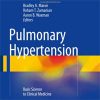Ultrasound Grayscale Analysis in ARDS COVID-19
clinicaltrials.govRecent evidence regarding the novel coronavirus disease 2019 (COVID19) is growing in describing the characteristics of this disease, with main focus on lung morphology. Few data are available regarding the peripheral and respiratory muscular characteristics. Using a ultrasound greyscale analysis, It Is possibile to evaluated the muscle quality.
The hypothesis of this study is that a combined assessment of respiratory (i.e., intercostal and diaphragm) and peripheral (i.e., quadriceps) muscles quantity (as measured by thickness) and quality (as assessed by greyscale analysis), would reflect the severity of illness.
Thus, the aims of this study are to assess if the quality characteristics of parasternal intercostal, diaphragm and quadriceps muscles of ICU COVID19 patients influenced the outcomes and are correlated with other variables, such as fluid or protein balance, or indexes of inflammation.
Up to 30% of the patients affected by the novel coronavirus disease 2019 (COVID19) may develop an acute respiratory distress syndrome (ARDS), which requires in the majority of patients a respiratory support with non-invasive mechanical ventilation and, very often, the intubation.
Recent evidence is growing in describing the characteristics of this disease, with main focus on lung morphology.
Therapeutic strategies implemented for their management may often lead to short-term muscular and functional alterations resulting in ICU-Acquired weakness. These lead to long-term disabilities expressing through dependence and quality of life impairment of survivors.
Muscular ultrasonography allows visualization and classification of muscle characteristics which may be described besides muscles’ thickness with their echogenicity. In fact, lean muscle tissue has a low echogenicity, whereas intramuscular fat and connective tissue are characterized by a high echogenicity.
Using a greyscale analysis, the total muscle echo-intensity may in fact be quantified.

















